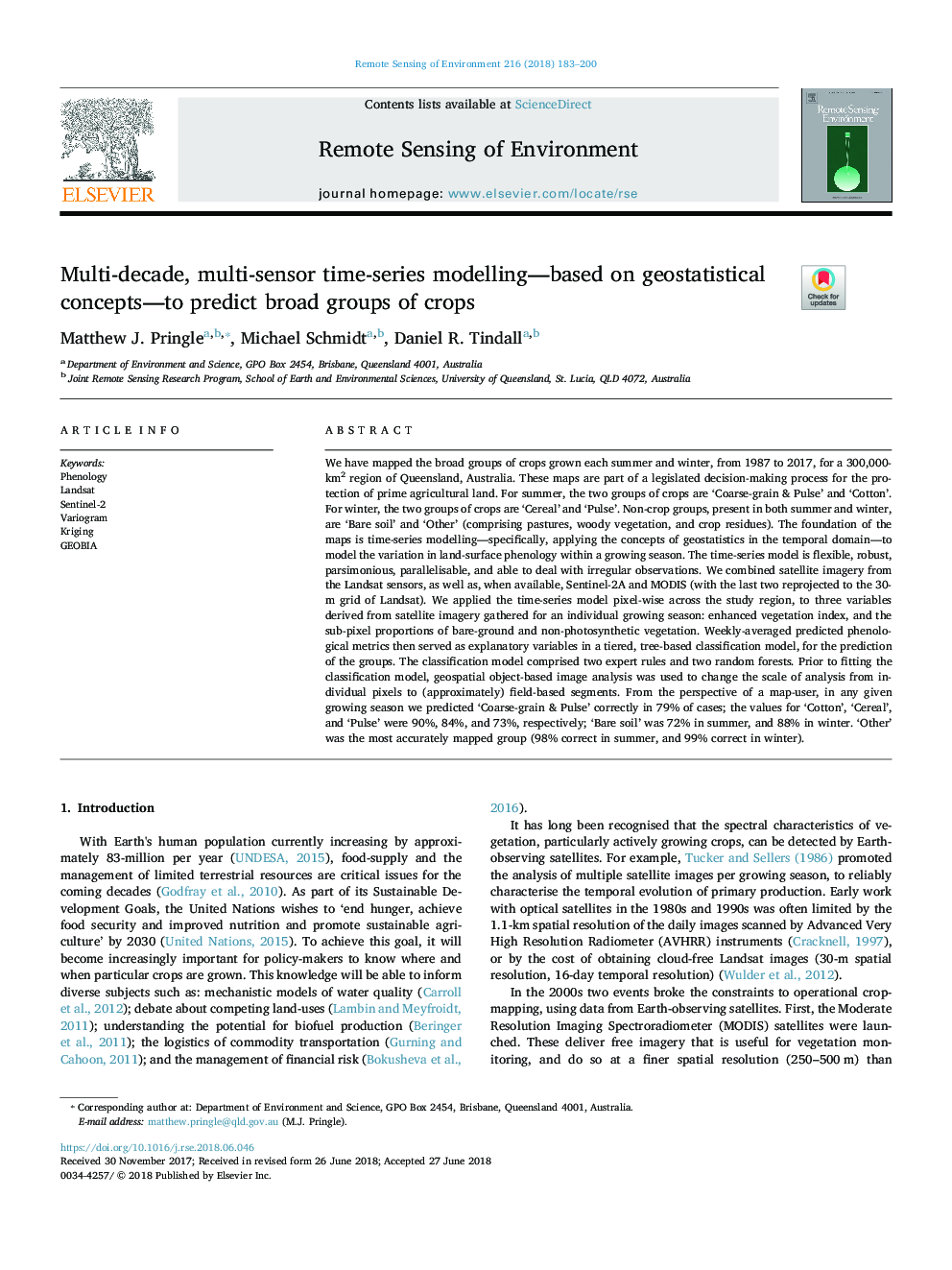| Article ID | Journal | Published Year | Pages | File Type |
|---|---|---|---|---|
| 8866410 | Remote Sensing of Environment | 2018 | 18 Pages |
Abstract
We have mapped the broad groups of crops grown each summer and winter, from 1987 to 2017, for a 300,000-km2 region of Queensland, Australia. These maps are part of a legislated decision-making process for the protection of prime agricultural land. For summer, the two groups of crops are 'Coarse-grain & Pulse' and 'Cotton'. For winter, the two groups of crops are 'Cereal' and 'Pulse'. Non-crop groups, present in both summer and winter, are 'Bare soil' and 'Other' (comprising pastures, woody vegetation, and crop residues). The foundation of the maps is time-series modelling-specifically, applying the concepts of geostatistics in the temporal domain-to model the variation in land-surface phenology within a growing season. The time-series model is flexible, robust, parsimonious, parallelisable, and able to deal with irregular observations. We combined satellite imagery from the Landsat sensors, as well as, when available, Sentinel-2A and MODIS (with the last two reprojected to the 30-m grid of Landsat). We applied the time-series model pixel-wise across the study region, to three variables derived from satellite imagery gathered for an individual growing season: enhanced vegetation index, and the sub-pixel proportions of bare-ground and non-photosynthetic vegetation. Weekly-averaged predicted phenological metrics then served as explanatory variables in a tiered, tree-based classification model, for the prediction of the groups. The classification model comprised two expert rules and two random forests. Prior to fitting the classification model, geospatial object-based image analysis was used to change the scale of analysis from individual pixels to (approximately) field-based segments. From the perspective of a map-user, in any given growing season we predicted 'Coarse-grain & Pulse' correctly in 79% of cases; the values for 'Cotton', 'Cereal', and 'Pulse' were 90%, 84%, and 73%, respectively; 'Bare soil' was 72% in summer, and 88% in winter. 'Other' was the most accurately mapped group (98% correct in summer, and 99% correct in winter).
Related Topics
Physical Sciences and Engineering
Earth and Planetary Sciences
Computers in Earth Sciences
Authors
Matthew J. Pringle, Michael Schmidt, Daniel R. Tindall,
